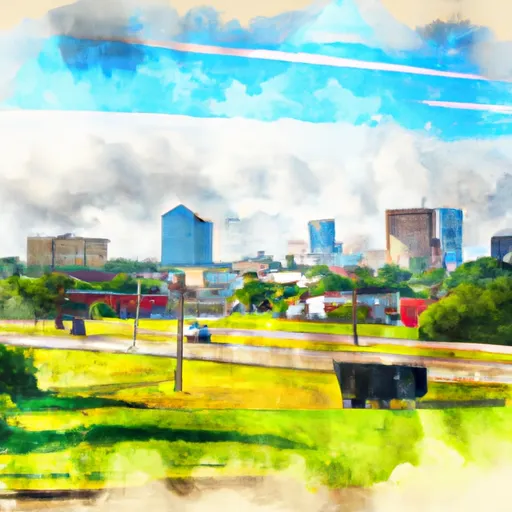-
 Snoflo Premium
Snoflo Premium
Get unlimited access to all our content
With no Ad interruptions! - Start Your Free Trial Login with existing account
Lake-Jackson
Eden Index
Climate
7.4
•
Recreation
2.8
•
Community
3.3
•
Safeguard
4.8/10

Lake Jackson is a vibrant city located in Brazoria County, Texas, known for its beautiful natural surroundings and outdoor recreational opportunities. The climate in Lake Jackson is characterized by hot and humid summers, with temperatures often exceeding 90°F, and mild winters with average temperatures in the 50s and 60s. The area receives abundant rainfall throughout the year, making it prone to occasional flooding.
One of the prominent features of the city is the namesake Lake Jackson, a man-made lake formed by the damming of Oyster Creek. The lake serves as a valuable hydrological resource for the region, providing water for various purposes such as irrigation and recreation. The lake is home to several species of fish, attracting fishing enthusiasts who can enjoy angling for bass, catfish, and sunfish.
Lake Jackson offers a plethora of outdoor recreational opportunities. The city has numerous parks, trails, and nature preserves that allow residents and visitors to explore and appreciate the area's natural beauty. Outdoor enthusiasts can enjoy activities such as hiking, biking, bird-watching, and picnicking. Additionally, the nearby Gulf Coast provides opportunities for water-based activities like boating, kayaking, and swimming.
In summary, Lake Jackson, Texas, offers a pleasant climate, abundant hydrological resources, and diverse outdoor recreational opportunities, making it an ideal destination for nature lovers and outdoor enthusiasts.
What is the Eden Index?
The Snoflo Eden Index serves as a comprehensive rating system for regions, evaluating their desirability through a holistic assessment of climate health, outdoor recreation opportunities, and natural disaster risk, acknowledging the profound impact of these factors on livability and well-being.
Climate Health Indicator (CHI): 7.4
Lake-Jackson receives approximately
1295mm of rain per year,
with humidity levels near 83%
and air temperatures averaging around
21°C.
Lake-Jackson has a plant hardyness factor of
9, meaning
plants and agriculture in this region tend to thrive here all year round.
By considering the ideal temperature range, reliable water supplies, clean air, and stable seasonal rain or snowpacks, the Climate Health Indicator (CHI) underscores the significance of a healthy climate as the foundation for quality living.
A healthy climate is paramount for ensuring a high quality of life and livability in a region, fostering both physical well-being and environmental harmony. This can be characterized by ideal temperatures, reliable access to water supplies, clean air, and consistent seasonal rain or snowpacks.
Weather Forecast
Streamflow Conditions
Galveston Bay-Sabine Lake
Area Rivers
Galveston Bay-Sabine Lake
Snowpack Depths
Galveston Bay-Sabine Lake
Reservoir Storage Capacity
Galveston Bay-Sabine Lake
Groundwater Levels
Recreational Opportunity Index (ROI): 2.8
The Recreational Opportunity Index (ROI) recognizes the value of outdoor recreational options, such as parks, hiking trails, camping sites, and fishing spots, while acknowledging that climate plays a pivotal role in ensuring the comfort and consistency of these experiences.
Access to outdoor recreational opportunities, encompassing activities such as parks, hiking, camping, and fishing, is crucial for overall well-being, and the climate plays a pivotal role in enabling and enhancing these experiences, ensuring that individuals can engage in nature-based activities comfortably and consistently.
Camping Areas
| Campground | Campsites | Reservations | Toilets | Showers | Elevation |
|---|---|---|---|---|---|
| Stubblefield Lake | 60 | 219 ft | |||
| Spring Creek Park | 11 | 184 ft | |||
| Camp Mohawk County Park | None | 23 ft | |||
| Huntsville State Park | 190 | 349 ft | |||
| Cagle Rec Area | 47 | 257 ft | |||
| Brazos Bend State Park | 77 | 63 ft |
Nearby Fishing
Nearby Ski Areas
Catastrophe Safeguard Index (CSI):
The Catastrophe Safeguard Index (CSI) recognizes that natural disaster risk, encompassing floods, fires, hurricanes, and tornadoes, can drastically affect safety and the overall appeal of an area.
The level of natural disaster risk in a region significantly affects safety and the overall livability, with climate change amplifying these risks by potentially increasing the frequency and intensity of events like floods, fires, hurricanes, and tornadoes, thereby posing substantial challenges to community resilience and well-being.
Community Resilience Indicator (CRI): 3.3
The Community Resilience Indicator (CRI) recognizes that education, healthcare, and socioeconomics are crucial to the well-being of a region. The CRI acknowledges the profound impact of these elements on residents' overall quality of life. By evaluating educational resources, healthcare accessibility, and economic inclusivity, the index captures the essential aspects that contribute to a thriving community, fostering resident satisfaction, equity, and social cohesion.

